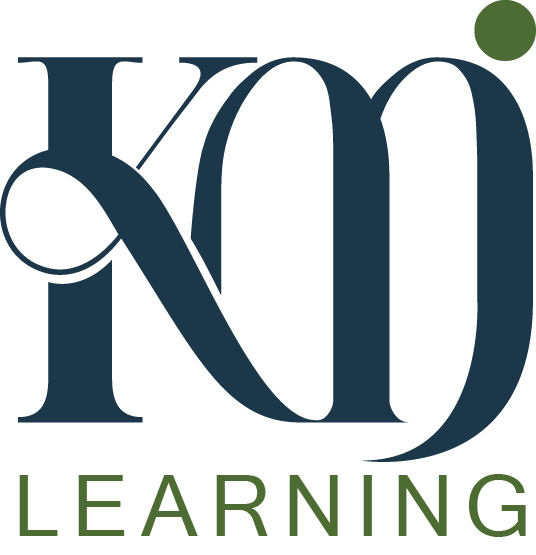Thinking Like a Test Maker
Kathleen JasperMastering Exams: How to Think Like a Test Maker

Have you ever wondered why some students consistently ace exams while others struggle, despite similar preparation? The secret often lies in their ability to think like the person who created the test. Adopting a "test maker mindset" can significantly boost your exam performance by helping you anticipate questions, identify key concepts, and strategically approach your studies.
In this blog, we'll explore practical strategies—including the powerful "3-to-1 Strategy" and the "Working Backwards" method—to help you think like a test maker, improve your test-taking skills, and ultimately achieve better results.
Why Thinking Like a Test Maker® Matters
Test makers design exams to assess specific knowledge, skills, and critical thinking abilities. By understanding their perspective, you can:
- Predict the types of questions likely to appear.
- Identify the most important concepts and topics.
- Recognize common traps and distractors.
- Improve your confidence and reduce test anxiety.
Let's dive into actionable strategies to help you adopt this powerful mindset.
1. Understand the Test Maker's Goals
Every exam has a clear purpose. Test makers aim to evaluate your understanding of core concepts, your ability to apply knowledge, and your critical thinking skills. To align your preparation with their goals:
- Review the syllabus or exam outline carefully.
- Identify key learning objectives and competencies.
- Pay attention to topics emphasized repeatedly in class or study materials.
Actionable Tip: Create a checklist of learning objectives and ensure your study sessions directly address each one.
2. Analyze Past Exams and Practice Tests
Test makers often follow consistent patterns. Reviewing previous exams or practice tests can reveal valuable insights into their approach:
- Notice recurring question formats (multiple-choice, short-answer, essay).
- Identify frequently tested concepts and themes.
- Observe how questions are phrased and structured.
Actionable Tip: Practice answering past exam questions under timed conditions to familiarize yourself with the test maker's style and pacing.
3. Identify Common Distractors and Traps
Test makers intentionally include distractors—incorrect answers designed to seem plausible. Recognizing these traps can significantly improve your accuracy:
- Watch out for absolute terms like "always," "never," or "only," which often indicate incorrect answers.
- Be cautious of answers that seem overly complex or unrelated to the main topic.
- Eliminate obviously incorrect choices first to narrow down your options.
Actionable Tip: When practicing multiple-choice questions, actively identify distractors and explain why they're incorrect.
4. Think Critically and Anticipate Questions
Test makers prioritize critical thinking and application over rote memorization. To anticipate potential questions:
- Ask yourself, "If I were creating this test, what concepts would I consider most important?"
- Consider how concepts connect or contrast with each other.
- Predict questions that require applying knowledge to real-world scenarios or problem-solving situations.
Actionable Tip: Form study groups and take turns creating practice questions for each other, simulating the test maker's role.
5. Pay Attention to Details and Instructions
Test makers often embed clues within instructions or question wording. Carefully reading instructions can help you avoid unnecessary mistakes:
- Highlight or underline key words in questions (e.g., "compare," "contrast," "explain," "justify").
- Note specific instructions regarding answer length, format, or required examples.
- Double-check your answers to ensure they directly address the question asked.
Actionable Tip: Practice reading questions twice—once quickly to grasp the overall meaning, and again slowly to catch subtle details.
6. Work Backwards from the Answer Choices
The "Working Backwards" method is especially effective for multiple-choice exams. Instead of immediately trying to recall the correct answer, start by analyzing the provided answer choices:
- Carefully read each answer choice first.
- Eliminate obviously incorrect or irrelevant options.
- Consider why the test maker included each distractor—what misconception or common error are they testing?
- Narrow down your choices and select the best-supported answer.
This approach helps you think critically, avoid common traps, and better understand the test maker's intentions.
Actionable Tip: Regularly practice multiple-choice questions by working backwards from the answer choices, explaining why each incorrect option was included.
Final Thoughts: Embrace the Test Maker Mindset
Thinking like a test maker® isn't about guessing or shortcuts—it's about strategic preparation, critical thinking, and understanding the purpose behind each exam. By adopting powerful methods like the "3-to-1 Strategy" and "Working Backwards," you'll become a more confident, efficient, and successful test-taker.
Ready to ace your next exam? Start thinking like a test maker today!




